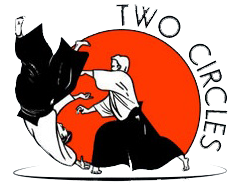The Benefits of Aikido
- The benefits of Aikido are many, and can last a lifetime. As a path of self-development, Aikido leads towards the integration of mind, body, and spirit, which not only benefits us, but benefits the people around us. As described in the Aikido Association of America website “Everything in Aikido training is meant to develop not only a strong individual, but one with the wisdom and energy to positively benefit society
- Physically and psychologically, Aikido is at the same time very complex and yet very simple. The changes it can make in our lives begin at the surface and go as deep as we let it.
- Specifically, physical benefits of Aikido practice include increased balance, coordination, reaction, and sense of timing; improved posture, flexibility and aerobic conditioning; a greater awareness of our bodies and how we express ourselves through our bodies; and a more relaxed and confident presence.
- Mental benefits include this increased self-awareness and relaxation; better ability to resolve conflicts and deal with stressful situations in a calmer and more positive manner; greater self-confidence and self-discipline; and the constant challenge of self-development and learning new skills.
- Spiritual benefits include being able to improve one’s own quality of living; to break or change old habits and conditioning; to see things with greater clarity and perceptiveness; and to have a greater intuitive understanding of ourselves and the world around us.
- One cannot fully separate the physical, mental, and spiritual aspects of Aikido, nor of the benefits. None of these benefits come easily, yet if we train, they come. A good attitude, hard work, and self-reflection are necessary. One of O’Sensei’s favorite sayings was “Practice with fierce joy.” Relax, be patient with yourself, and train hard!
Fitness
Physical training goals pursued in conjunction with aikido include controlled relaxation, flexibility, and endurance, with less emphasis on strength training. In aikido, pushing or extending movements are much more common than pulling or contracting movements. This distinction can be applied to general fitness goals for the aikido practitioner. Certain anaerobic fitness activities, such as weight training, emphasize contracting movements. In aikido, specific muscles or muscle groups are not isolated and worked to improve tone, mass, and power. Aikido-related training emphasizes the use of coordinated whole-body movement and balance similar to yoga or pilates. For example, many dojo begin each class with warm-up exercises,, which may include stretching and break falls
Mental training
Aikido training is mental as well as physical, emphasizing the ability to relax the mind and body even under the stress of dangerous situations. This is necessary to enable the practitioner to perform the bold enter-and-blend movements that underlie aikido techniques, wherein an attack is met with confidence and directness.]Morihei Ueshiba once remarked that one “must be willing to receive 99% of an opponent’s attack and stare death in the face” in order to execute techniques without hesitation.As a martial art concerned not only with fighting proficiency but also with the betterment of daily life, this mental aspect is of key importance to aikido practitioners
